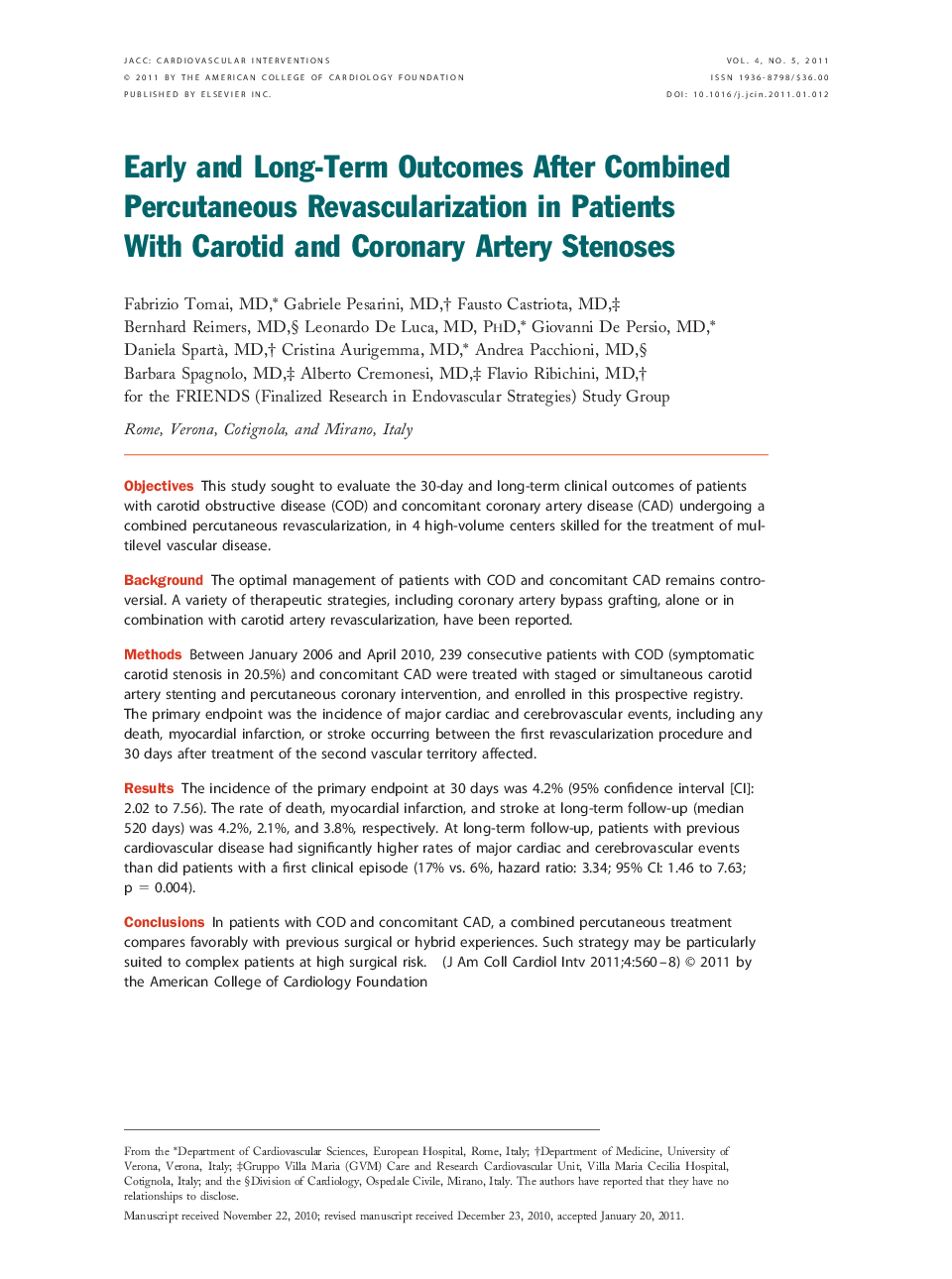| کد مقاله | کد نشریه | سال انتشار | مقاله انگلیسی | نسخه تمام متن |
|---|---|---|---|---|
| 2941547 | 1177075 | 2011 | 9 صفحه PDF | دانلود رایگان |

ObjectivesThis study sought to evaluate the 30-day and long-term clinical outcomes of patients with carotid obstructive disease (COD) and concomitant coronary artery disease (CAD) undergoing a combined percutaneous revascularization, in 4 high-volume centers skilled for the treatment of multilevel vascular disease.BackgroundThe optimal management of patients with COD and concomitant CAD remains controversial. A variety of therapeutic strategies, including coronary artery bypass grafting, alone or in combination with carotid artery revascularization, have been reported.MethodsBetween January 2006 and April 2010, 239 consecutive patients with COD (symptomatic carotid stenosis in 20.5%) and concomitant CAD were treated with staged or simultaneous carotid artery stenting and percutaneous coronary intervention, and enrolled in this prospective registry. The primary endpoint was the incidence of major cardiac and cerebrovascular events, including any death, myocardial infarction, or stroke occurring between the first revascularization procedure and 30 days after treatment of the second vascular territory affected.ResultsThe incidence of the primary endpoint at 30 days was 4.2% (95% confidence interval [CI]: 2.02 to 7.56). The rate of death, myocardial infarction, and stroke at long-term follow-up (median 520 days) was 4.2%, 2.1%, and 3.8%, respectively. At long-term follow-up, patients with previous cardiovascular disease had significantly higher rates of major cardiac and cerebrovascular events than did patients with a first clinical episode (17% vs. 6%, hazard ratio: 3.34; 95% CI: 1.46 to 7.63; p = 0.004).ConclusionsIn patients with COD and concomitant CAD, a combined percutaneous treatment compares favorably with previous surgical or hybrid experiences. Such strategy may be particularly suited to complex patients at high surgical risk.
Journal: JACC: Cardiovascular Interventions - Volume 4, Issue 5, May 2011, Pages 560–568